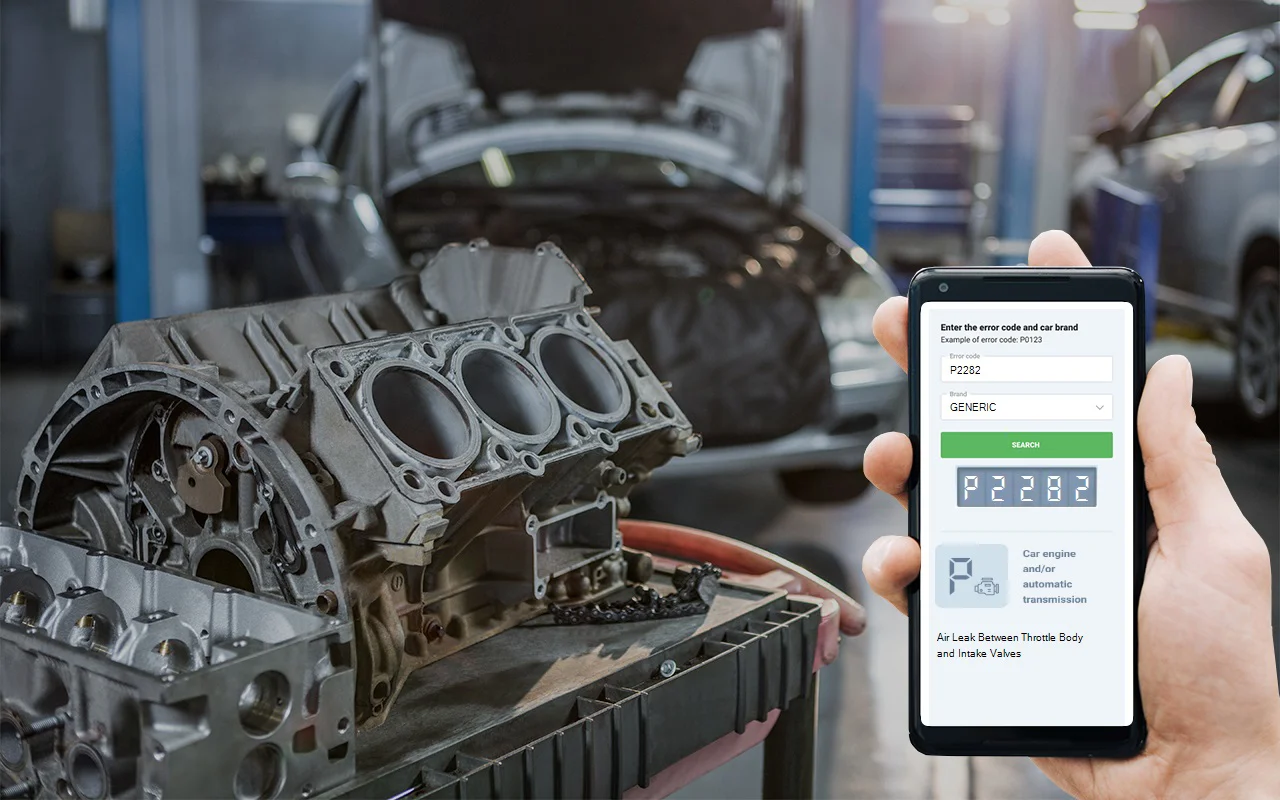P2282 is one of those codes that tells me right away there’s air slipping into the engine where it shouldn’t be. When your car’s computer flags a P2282, it’s caught unmetered air sneaking past the throttle body and heading straight for the intake valves. In plain terms, you’ve got extra air entering the engine, but the sensors aren’t counting it. That throws off the air-fuel balance-the heart of smooth engine operation. The system is built to keep tabs on every bit of air, and if it senses air getting in behind its back for more than five seconds, it won’t hesitate to set this code. From my years in the field, I can tell you, keeping this part of the system tight is vital for reliable performance and fuel economy. If there’s a leak, your engine management goes out the window, and that’s exactly what P2282 is trying to warn you about.
DTC P2282
Causes of P2282 trouble code
From what I see most often in the shop, P2282 is usually caused by one of the following issues:
- Unmetered air leaks between the throttle body and the intake valves-this could be a cracked hose, a loose clamp, or a gasket that’s not sealing right.
- Leaks at the intake manifold itself-sometimes the manifold gasket fails or the manifold develops a crack.
- The positive crankcase ventilation (PCV) system is leaking, or the PCV valve is stuck open, letting in air that shouldn’t be there.
In my experience, the PCV system is a common culprit, so I always check that early on. This error can also happen on this car brand Ford, Renault, or Opel.
Symptoms of obd2 code P2282
If you’ve got a P2282 code active, don’t be surprised if your car starts acting up. I’ve seen engines stumble at idle, hesitate when you hit the gas, and even stall out at stoplights. A lot of drivers only notice the check engine light at first, but usually there’s a change in how the car drives that follows close behind. Another sign-worse gas mileage. When the engine’s fighting to compensate for air it didn’t plan on, it’s going to burn more fuel. I always tell folks, if you notice any of these symptoms, don’t ignore them; your car’s trying to tell you something important.

Diagnosis steps for obd code P2282
Here’s how I usually tackle a P2282 code:
- First, I listen for any obvious hissing sounds under the hood with the engine running-those can point straight to a vacuum leak.
- Next, I visually inspect all the hoses and connections between the throttle body and the intake manifold. I’m looking for cracks, loose clamps, or anything that looks out of place.
- Then, I check the intake manifold gasket area for signs of leaks-sometimes you can see dirt or oil collecting around a bad seal.
- After that, I move on to the PCV system. I make sure the PCV valve isn’t stuck open and that all related hoses are in good shape and properly connected. Don’t forget to check both ends of every hose.
- If nothing obvious turns up, I’ll use a smoke machine to find smaller leaks. This tool pushes smoke into the intake system, and wherever it leaks out, that’s your problem spot.
It’s better to have someone assist you when checking for leaks, especially if you’re using a smoke machine or trying to listen for faint hissing sounds.

Common mistakes when fixing P2282
I’ve seen folks jump straight to replacing sensors or even the throttle body without checking for simple air leaks first. Another common mistake is overlooking the PCV system-it’s easy to forget, but it’s a frequent source of trouble. Skipping a thorough visual inspection or not checking every hose connection can lead to wasted time and money. Always start with the basics before moving on to more expensive parts.

Seriousness of dtc P2282
This is something you don’t want to ignore. Unmetered air can cause your engine to run lean, which means there’s too much air and not enough fuel. That can lead to rough running, stalling, and even engine damage if left unchecked. In the worst cases, you could end up with burned valves or damaged pistons. Honestly, it’s dangerous to let this slide-things can go south quickly if overlooked.
Repair options for P2282 code
The most reliable fixes I’ve seen for P2282 are:
- Repairing or replacing any cracked or loose intake hoses between the throttle body and intake manifold.
- Replacing a faulty intake manifold gasket or repairing a cracked manifold.
- Servicing or replacing the PCV valve and any damaged PCV hoses.
- After repairs, always clear the code and test drive to make sure it doesn’t come back.
It’s best to start with the simple stuff-hoses and the PCV system-before moving on to bigger repairs.
Conclusion
To sum it up, P2282 means your engine is getting extra air it shouldn’t, usually because of a leak between the throttle body and the intake valves or a problem with the PCV system. This isn’t something to put off-acting quickly can save you from serious engine damage. The best approach is to start with a careful inspection of all hoses and the PCV system, then move on to the intake manifold if needed. Fixing the root cause and clearing the code is the most reliable way to get your vehicle running right again and avoid bigger headaches down the road.




